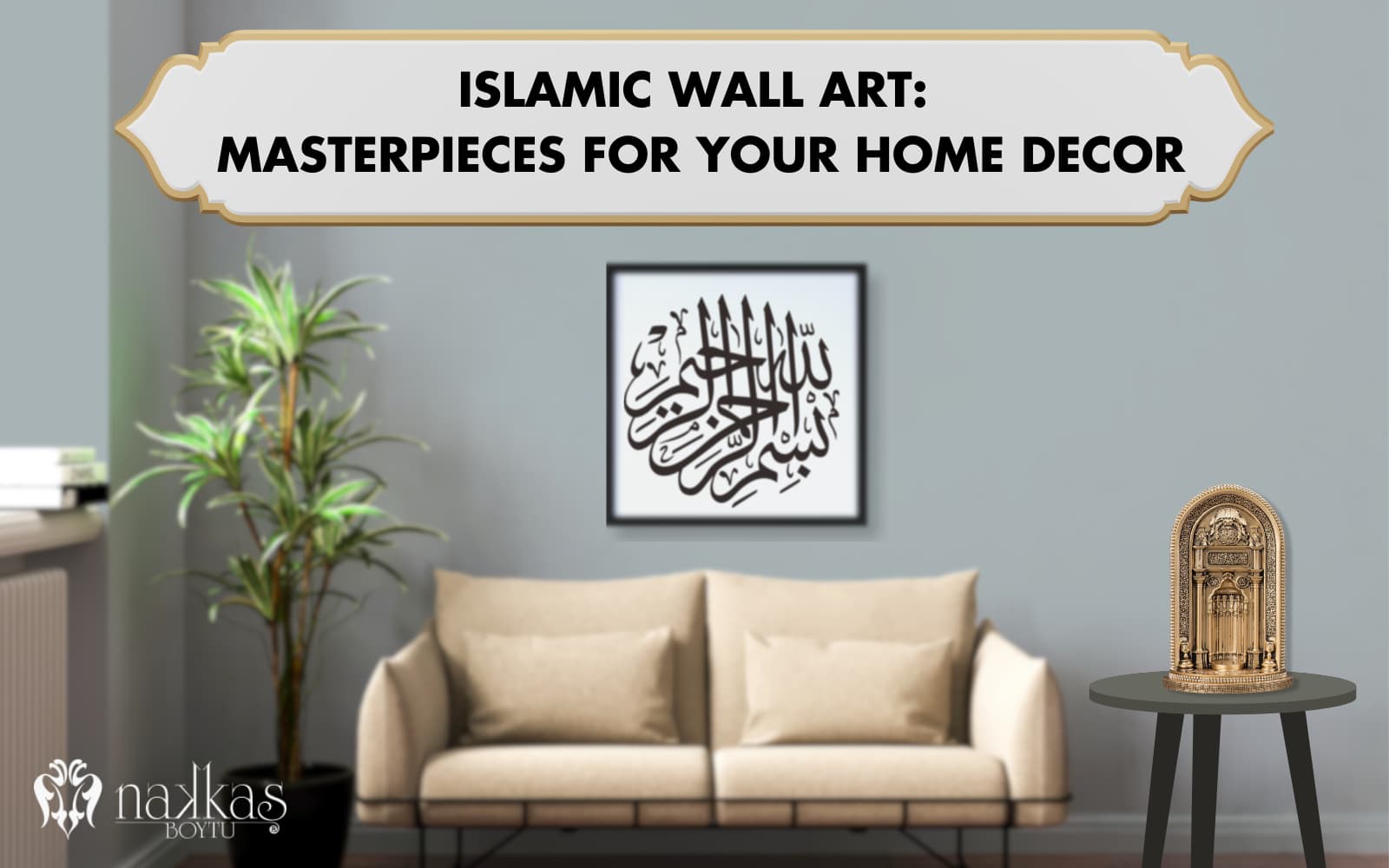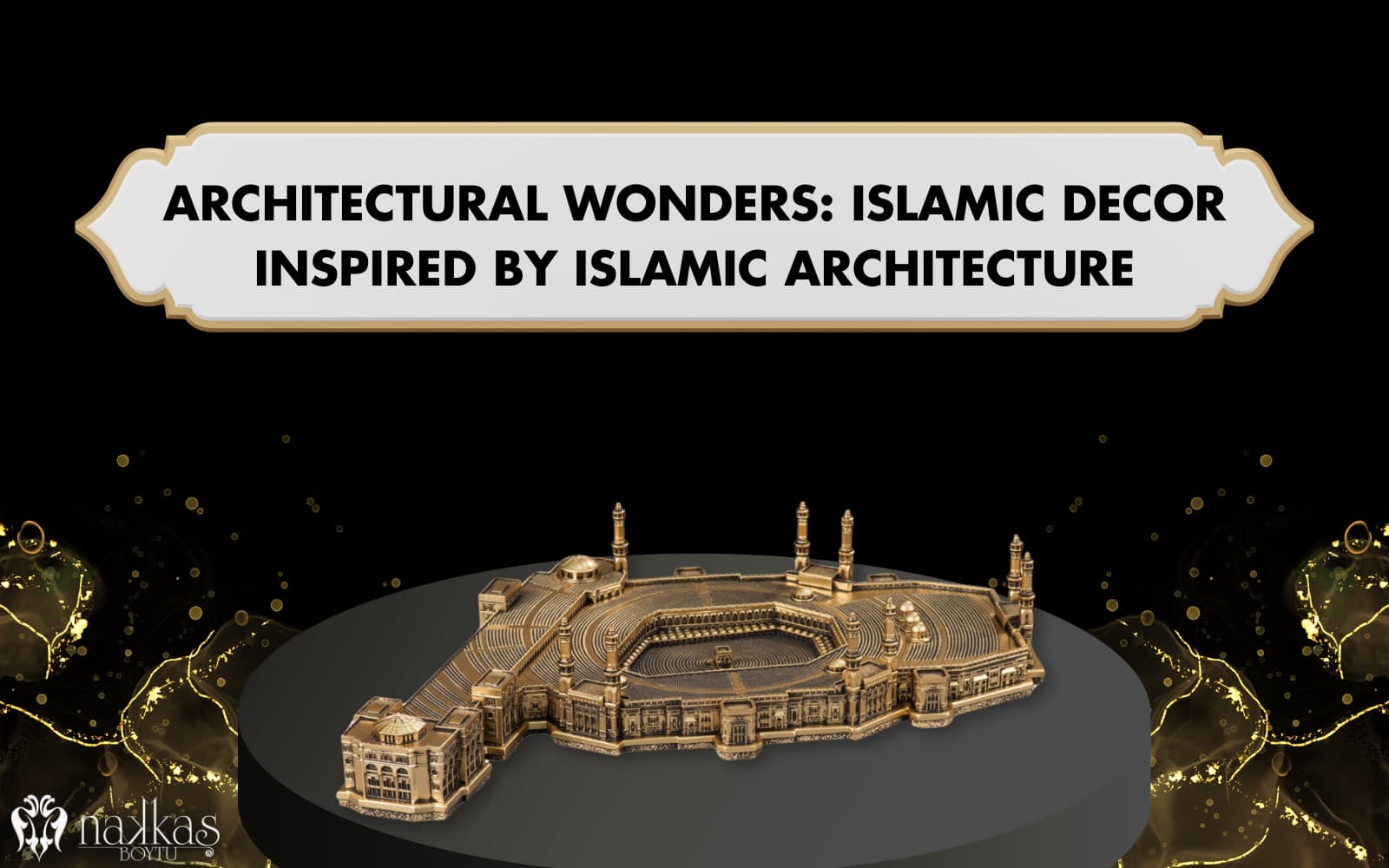Islamic art, with its intricate designs and deep symbolism, is a stunning addition to modern decor. Through geometric patterns, arabesques, and calligraphy, it reflects spiritual and cultural values and symbolizes order, infinity, and beauty.
Incorporating Islamic art decor into modern spaces enriches and transforms interiors. Spanning centuries and continents, from the Dome of the Rock to Ottoman tile work, this art form has versatile and aesthetic options for today's homes.
What are the Origins and Historical Development of Islamic Art?
Islamic art emerged in the Middle East in the 7th century. By combining influences from pre-Islamic Arab traditions, Byzantine art, and Persian motifs, an aesthetic art reflecting Islam's spiritual and cultural values emerged. Islamic art includes complex geometric patterns, floral motifs (arabesques), and calligraphy, symbolizing order, infinity, and spiritual beauty. The early Islamic period is characterized by the first examples of religious architecture, such as mosques. The Dome of the Rock in Jerusalem is an important example dating from the late 7th century.
The origins of Islamic art began to develop around the time of the Prophet Muhammad in cities such as Damascus, Baghdad, and later Qurtuba. This art form encompasses pieces such as ceramics, metalwork, textiles, and manuscripts. Over the centuries, Islamic art spread over a wide geographical area from Spain to India. This diffusion process integrated local styles and techniques while maintaining its basic aesthetic principles.
Which Historical Periods Most Influenced the Motifs in Islamic Art?
The motifs of Islamic art were influenced by the early Islamic period, pre-Islamic Arab, Byzantine, and Sassanid artistic traditions. In the early periods of Islam, geometric patterns and calligraphy were prominent motifs. The Abbasid Caliphate further enriched Islamic art with motifs inspired by Persian and Mesopotamian cultures.
During the Ottoman Empire, Islamic art adopted Central Asia, the Mediterranean, and Europe elements. Ottoman art is known for its tile work and Iznik ceramics with floral and geometric patterns. The Mughal period in India combined Iranian, Indian, and Islamic elements to produce intricate miniature paintings and great architectural monuments such as the Taj Mahal.
What are the Key Techniques in Islamic Art, and How Do They Enhance Its Beauty?
Islamic art uses various techniques to reflect the cultural and spiritual values of the Islamic world. These techniques come together to create a fascinating art form. These techniques are as follows:
- Calligraphy
- Geometric Patterns
- Arabesque (Flower Motifs)
- Use of Color and Materials
- Architectural Elements
- Use of Light
Understanding Islamic Calligraphy: Its Beauty and Significance
Islamic calligraphy transforms Arabic script into a visual masterpiece. Adorning mosques, manuscripts, and everyday objects, calligraphy reflects the divine. It features precise strokes and flowing lines.
Exploring Geometric Patterns in Islamic Art
Geometric patterns in Islamic art symbolize the infinite nature of creation. These patterns are a form of meditation and spiritual expression that reflect the infinite nature of Allah. From architecture to decorative arts, these Islamic
geometric forms are a unifying element in the Islamic world.

The Role of Arabesque Floral Motifs in Islamic Design
Arabesque floral motifs symbolize unity and the infinity of creation. Found in architecture, textiles, and manuscripts, these intricate patterns embody an abstract representation of nature. The continuous, interweaving patterns reflect the eternal nature of life and the divine. These motifs emphasize the harmony and interconnectedness of all things.
The Significance of Color and Materials in Islamic Artwork
In Islamic art, Islamic color and materials reflect spiritual, cultural and aesthetic values. The rich use of colors such as deep blues and vibrant greens, symbolizes paradise and renewal. Materials such as ceramics, textiles and glassware are meticulously crafted.
Islamic colors and materials harmoniously blend together, creating the most important element of visual appeal in Islamic art.
Key Architectural Elements in Islamic Structures
The main features of Islamic art include geometric patterns, arabesques, and calligraphy. In Islamic art architectural designs, domes and arches provide structural balance and aesthetic beauty. Minarets provide guidance to worshippers as well as a decorative and aesthetic appearance. Courtyards in mosques and palaces facilitate social interaction and environmental control.
The Artistic Use of Light in Islamic Architecture
Islamic architecture uses light to emphasize its aesthetic and spiritual dimensions. Architects use natural light through elements such as mashrabas, muqarnas, and stained glass to create patterns and textures that change throughout the day. Light emphasizes intricate details in geometric and floral designs. This interplay of light and shadow enhances the architectural beauty.
Sustainability of Islamic Art: Transmission from Generation to Generation
The sustainability of Islamic art lies in its ability to adapt to new eras while preserving fundamental aesthetic and spiritual values. This art form, transmitted through meticulous craftsmanship and cultural preservation, remains up-to-date by constantly inspiring new generations. The most exquisite way to reflect Islamic culture is through Nakkaş Boytu's meticulously crafted products, which draw inspiration from traditional Islamic motifs and techniques. These products also strengthen customers' spiritual ties to Islamic heritage. Take a closer look at how the works of
Nakkaş Boytu bring the beauty and spirituality of Islamic art into your home.






